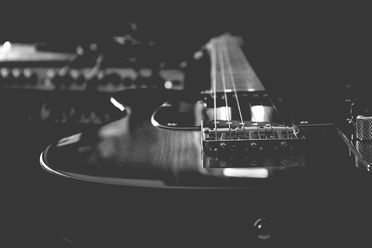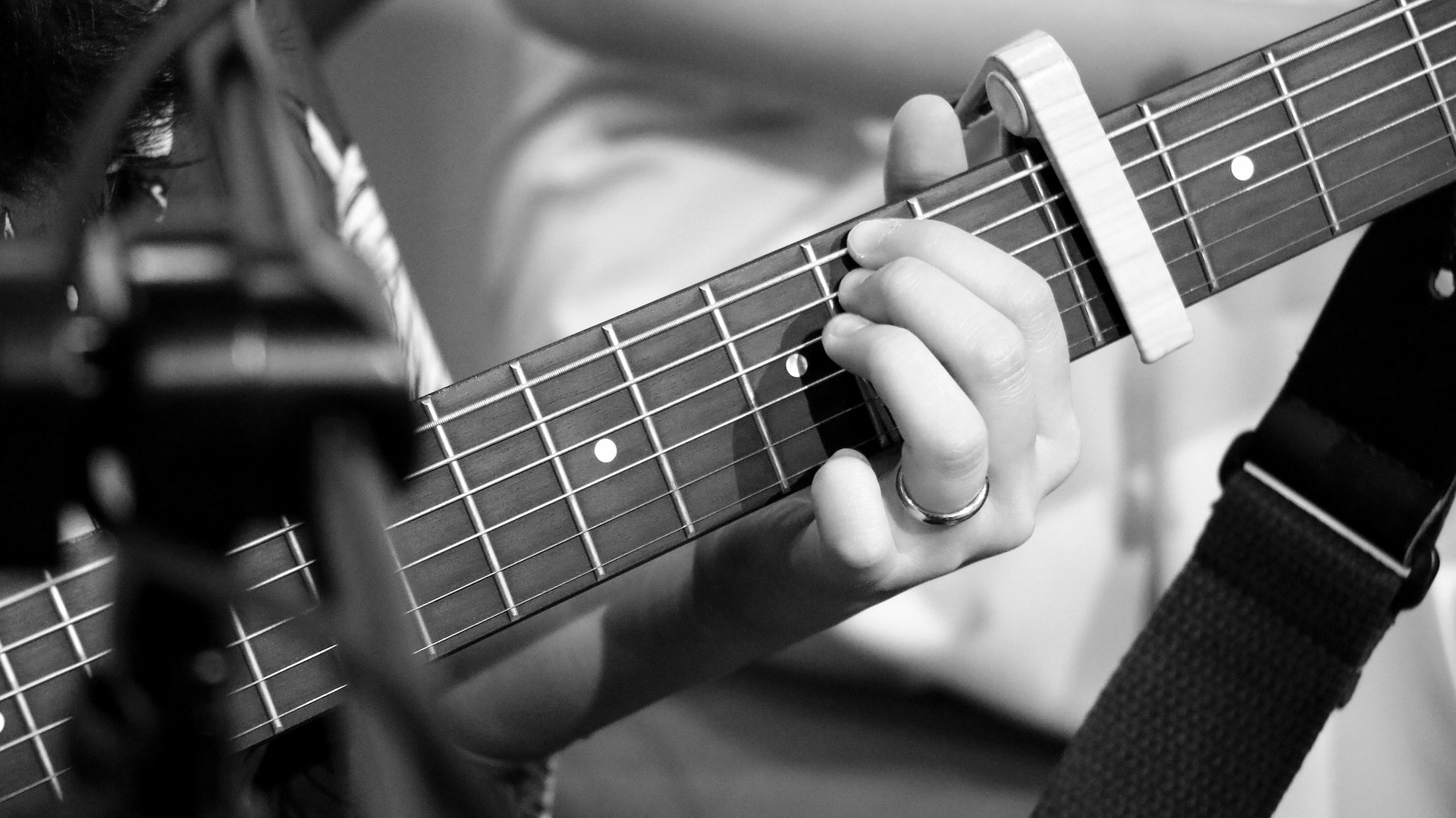Have you ever come across a chord like G/B or D/F# and wondered how to play it? Beginning guitarists are often confused by what are called slash chords. And no, we’re not talking about Guns N’ Roses. Slash chords add color to your playing by emphasizing bass notes. They build steps between chords and create moving bass lines that give a song a sense of momentum or flow. The following are 9 things you need to know about slash chords so you can add them to your bag of guitar tricks:
1. The meaning of the “/”. The slash isn’t shorthand for “or.” It isn’t offering you the choice to play either the chord to the left or to the right of it. Slash chords are basically chords with an altered root note. The note on the left side of the slash indicates the chord you’re to play, while the note to the right of the slash tells you the chosen bass note for that chord, which is different from the chord’s lowest sounding or root note.
2. How to pronounce the “/”. A chord with a slash in its name, as in Am/G, is typically pronounced as either an “Am slash G” or “Am over G” chord.
3. Know your fretboard. All the many different frets on a guitar can be intimidating, but it’s important to know the notes on your fretboard. Where is the B bass note on your guitar? Where is the C# bass note? If you know your fretboard well enough, playing slash chords will be a cinch.
4. Know what a root note is. Although any note can serve as a bass note, more often than not when we strum a chord, we try to use the chord’s root note as the lowest note we play. A root note is the note upon which a chord is built. It’s literally the root of the chord. For instance, the root note of an A chord is A. Likewise the root note of Am is A. The root note of E or Em is E. The root note of G7 is G, and the root note of C7(#9) is C.
5. Understand how chords are constructed. Chords are built from scales. In order to understand how to work with slash chords, you have to have some grasp of scales and intervals and how chords are constructed from them.
6. Understand inversions. A chord inversion is where the root is not the lowest note in a chord. This means another note in the chord occupies the bass position. In essence, you rearrange the stack of notes in a chord. Inversions give you more voicing options for a given chord, and allow you to play chords in more positions on the fretboard.
7. Use your brain to finger smartly. Your fingers aren’t made of rubber and won’t always be able to streeeetch to meet the demands of a slash chord. Therefore, you need to know how to figure out the most economical fingering for a chord. For instance, if you were to play a B7/A, the closest A note below the low B (second fret, fifth string) is the A on the fifth fret, sixth string. That would make the chord pretty tricky to grab. The easiest way to play the B7/A slash chord then is to just change the low B into an A by removing your second finger from the fifth string. The chord is still a B7 since it contains the root (B, the most important tone, albeit an octave higher on the open second string), the 3rd (D#), the 5th (F#) and the 7th (A).
8. Highlight the bass line. You can emphasize bass notes by playing the bottom note of a chord on beat one in each measure and then strumming the remainder of the chord for the rest of the measure.
9. Invent your own slash chords. Think of a chord then pick a random note to play in the bass. Try to figure out how to play the chord. The chord might not sound wonderful, but you may stumble upon some you like. This exercise is great practice for learning note names on the fretboard and for working with the concepts of chord construction and inversion. See what interesting slash chord combinations you come up with on your own.
For more on how chords work, watch Christopher Schlegel’s tutorial Introduction to Music Theory.
About The Author
Founded in 1998, Guitar Tricks Online Guitar Lessons is the Web’s first multimedia guitar lesson site. 16 years later, Guitartricks.com features over 40 guitar instructors continuously creating a massive library of online video guitar lessons (11,000+) covering every musical style, technique, and level of ability.



